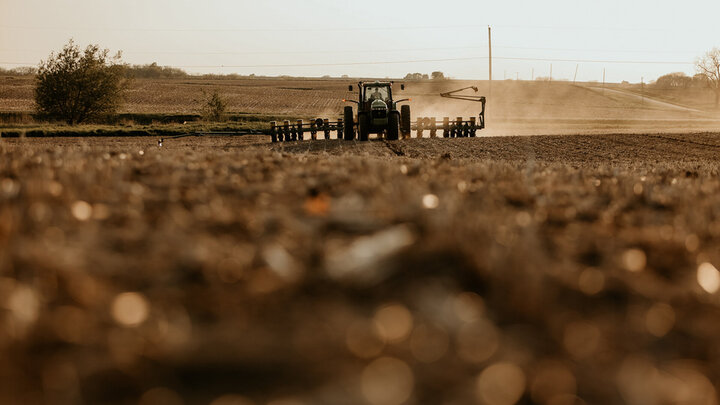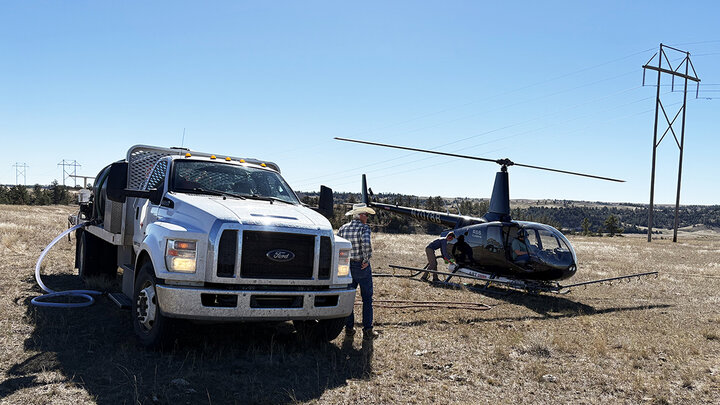Original content created by Dr. Jim Stack, former UNL Extension Plant Pathologist currently Kansas State University Extension Plant Pathologist. Content edited and approved by Dr. Tamra Jackson, UNL Extension Plant Pathologist.
Pathogen
Cercospora zea-maydis Tehon & E. Y. Daniels. (Teleomorh: Mycospharella). Fungal structures: hyphae and conidia. Occurs throughout the Corn Belt from mid-Atlantic states to Nebraska and Colorado. Two populations distinguishable by growth rate on laboratory media, geographic distribution, production of the toxin cercosporin, and molecular analysis have been described: one population occurs only in the eastern Corn Belt and mid-Atlantic states, while the other is found throughout the USA. They do not differ in virulence.
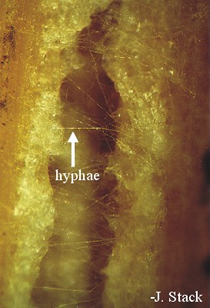

Disease Symptoms
All corn hybrids and inbreds are susceptible to Gray Leaf Spot (GLS). In minimum tillage fields with a history of GLS, symptoms can occur on the lower leaves prior to tasseling. Immature GLS lesions can be easily confused with lesions caused by other pathogens; e.g., eyespot (Kabatiella), anthracnose (Colletrichum). Mature lesions on leaves are rectangular in shape and restricted by leaf veins; reverse lighting reveals a yellow halo on most hybrids. Mature lesions are diagnostic and easily distinguishable from other diseases. As lesions expand they coalesce resulting in a blighting of large portions of the leaf. When the source of primary innoculum is within the field, symptoms originate on the lower leaves and progress up the plant as infection cycles occur. When severe, the entire plant may be blighted. Stalk infections have been reported and can result in lodging if severe. Lesions on sheath or husk tissues may be be oval to ellipsoidal in shape and are not usually diagnostic. Severely affected fields can appear to be experiencing early dry-down. The time from infection to the production of more innoculum can be 14-21 days on a susceptible hybrid and 21-28 days on a tolerant hybrid.

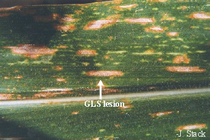

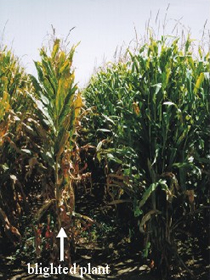

Favorable Environmental Conditions
Temperature: 70°-90° F/25°-32° C, Relative Humidity: >12 hours @ > 90% RH, and Leaf Wetness: >12 hours of leaf wetness (from dew, rain, or irrigation).
Management
Genetic Resistance
Hybrid tolerance/resistance is the best option for management of GLS. Tolerant hybrids yield well under moderate to high disease pressure.
Cultural Practices
Tillage can reduce the risk of GLS when the residue is incorporated into the soil and decomposition results. However, when other GLS management measures are employed; e.g., crop rotation, the use of tolerant hybrids, and the application of fungicides, the benefits from reduced tillage (e.g., increased water retention, reduced erosion) outweigh the negative impacts of GLS.
Rotation to crops other than corn for at least one year in low risk fields (minimum two years in high risk fields) may minimize the severity of GLS.
Chemical/Biological Control
Under high disease pressure, timely fungicide applications can greatly minimize impact on yield. These applications are costly and usually only practical when disease pressure is high.
Links
For additional information, see the UNL Extension NebGuide, Gray Leaf Spot of Corn (G1902).





